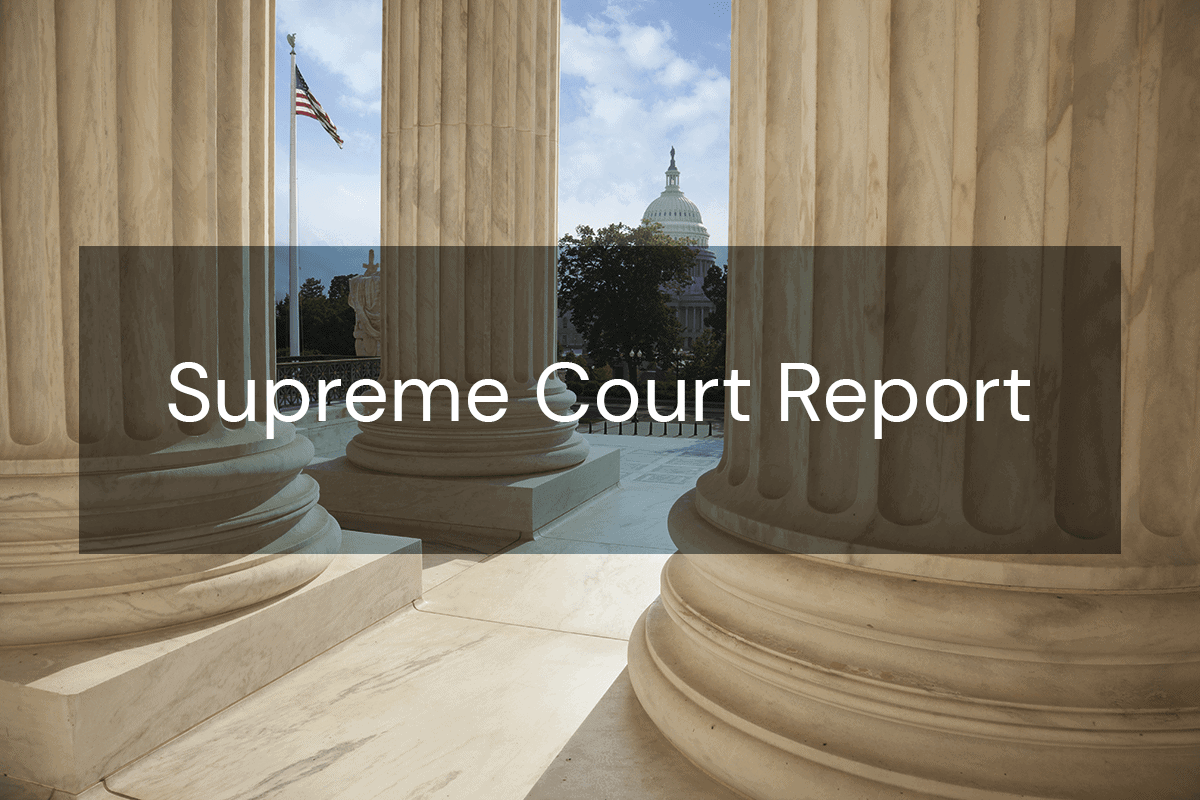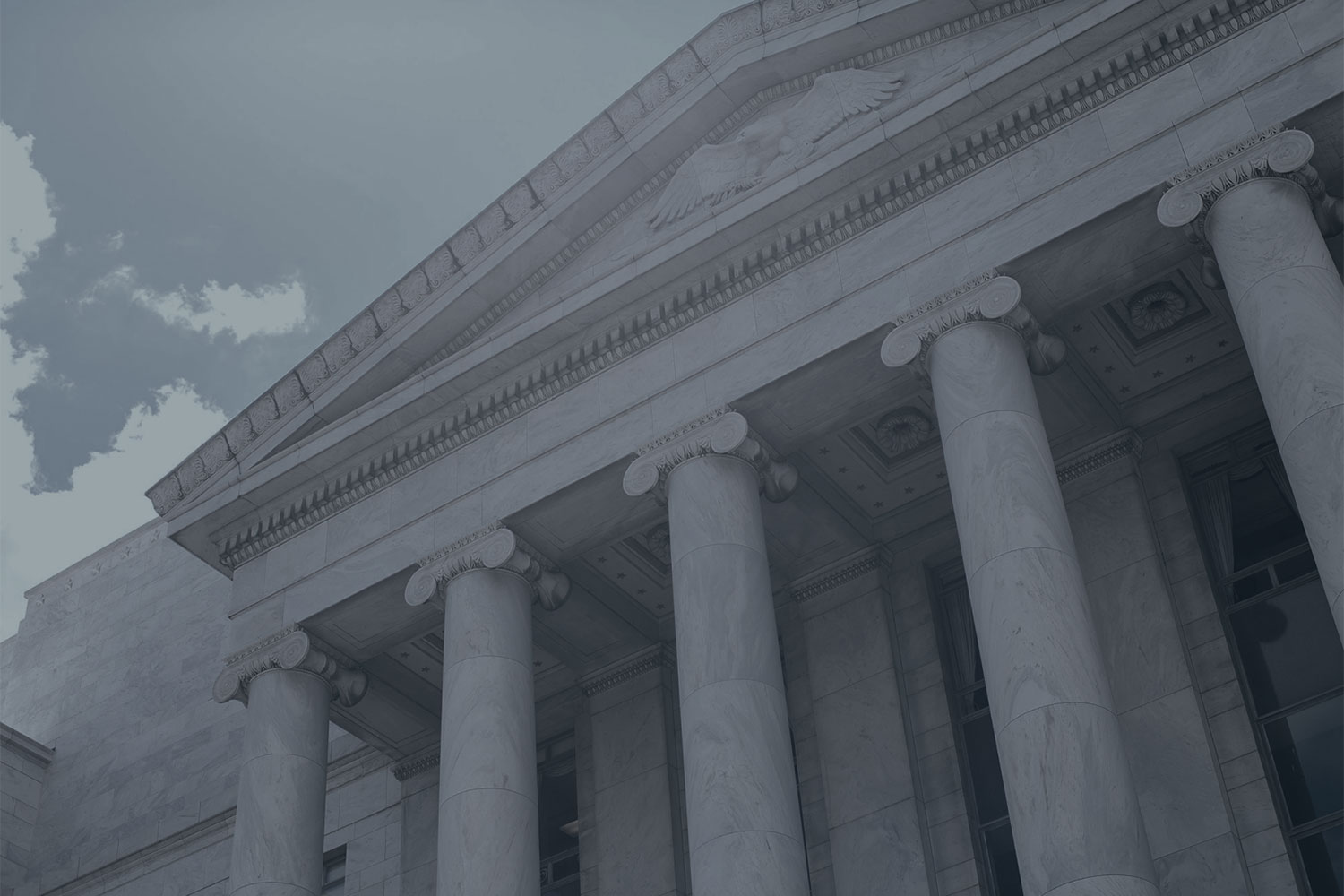-
 Director, Center for Supreme Court AdvocacyNational Association of Attorneys General
Director, Center for Supreme Court AdvocacyNational Association of Attorneys General

This Report summarizes cases granted review on October 29 and November 5, 2021 (Part I).
Cases Granted Review: Arizona v. City and County of San Francisco, CA, 20-1775
Arizona v. City and County of San Francisco, CA, 20-1775. The Court limited the grant of certiorari to the first question presented, which asks “[w]hether States with interests should be permitted to intervene to defend a rule when the United States ceases to defend.” The issue arises in the wake of the Biden administration’s decision not to appeal rulings striking down a Trump administration rule interpreting the “public charge” provision of the immigration laws. The Immigration and Nationality Act provides that “[a]ny alien who . . ., in the opinion of the [Secretary of Homeland Security] at the time of application for admission or adjustment of status, is likely at any time to become a public charge is inadmissible.” 8 U.S.C. §1182(a)(4)(A). Although the statute does not define “public charge,” it provides that the Secretary “shall at a minimum consider the alien’s (I) age; (II) health; (III) family status; (IV) assets, resources, and financial status; and (V) education and skills.” §1182(a)(4)(B). In August 2019, DHS issued a final rule (the Rule) that adopted a new approach to public-charge determinations. The Rule defined “public charge” to mean a noncitizen who receives one or more specified public benefits for more than 12 months in the aggregate within any 36-month period. The specified benefits included cash assistance for income maintenance as well as certain federal non-cash benefits, such as for healthcare, housing, and nutrition assistance. Under the Rule, a “broader” and “expanded” group of noncitizens were potentially inadmissible to the United States than under the prior interpretation.
The 2019 Rule generated extensive litigation across the United States. Plaintiffs who had opposed adoption of the Rule (including 21 states and numerous local governments and nongovernmental organizations) filed suits in five district courts in four circuits alleging that the Rule was unlawful on numerous grounds. All five district courts concluded that the 2019 Rule was likely unlawful, and entered preliminary injunctions barring the Rule from taking effect. After those rulings were stayed (either by the court of appeals or Supreme Court), DHS began implementing the Rule for the first time in February 2020. The government’s appeals of the preliminary injunctions proceeded, and the Second, Seventh, and Ninth Circuits affirmed the preliminary injunctions entered in their respective jurisdictions. In November 2020, the District Court for the Northern District of Illinois entered a partial final judgment, which vacated the 2019 Rule on a nationwide basis under the Administrative Procedure Act. On February 22, 2021, the Supreme Court granted the government’s petition for a writ of certiorari in DHS v. New York, No. 20-449, which sought review of the preliminary injunctions issued by the U.S. District Court for the Southern District of New York. At the time, a cert petition seeking review of the Ninth Circuit decision affirming preliminary injunctions was pending. About two weeks later, DHS (now under the Biden administration) announced that the government would cease defending the 2019 Rule. Consistent with that determination, the government filed stipulations dismissing the cases in the Supreme Court, and likewise filed motions to dismiss active public-charge-related appeals in the lower courts, including the government’s appeal of the partial final judgment entered by the Northern District of Illinois. DHS then issued a statement noting that “[f]ollowing the Seventh Circuit dismissal . . ., the final judgment . . ., which vacated the 2019 public charge rule, went into effect” and “[a]s a result, the 1999 interim field guidance . . . that was in place before the 2019 public charge rule is now in effect.”
One day after the United States dismissed its petition in this case, the State of Arizona in conjunction with twelve other states (the Petitioning States) moved to intervene in the Ninth Circuit for the purpose of defending the Rule. On April 8, 2021, a majority of the court denied the motion over a dissent by Judge VanDyke. In seeking review of that holding, the Petitioning States argue that “when an incoming administration concludes that current litigation is inconsistent with its policy preferences, it typically takes the ‘traditional route’ and requests that the court hold cases in abeyance while the United States pursues the APA process.” Instead (in Judge VanDyke’s words), the United States “terminate[d] the rule with extreme prejudice—ensuring not only that the rule was gone faster than toilet paper in a pandemic, but that it could effectively never, ever be resurrected, even by a future administration.” The Petitioning States maintain that “[b]y stipulating to dismiss pending appeals challenging the Rule, the Administration managed to circumvent the APA rulemaking processes entirely, depriving the States of the input they would normally have.” And “this was done all while evading th[e Supreme] Court’s review of the merits of the Rule.” The Petitioning States argue that they “satisfied all requirements for intervention as of right under Rule 24.” As to timeliness, “the Petitioning States moved in the Ninth Circuit a mere one day after it became clear that the United States would no longer defend the Rule.” “As to the remaining factors, the Petitioning States have significant protectable interests in the continuing validity of the Rule and that interest was no longer being represented at all. The Rule itself estimates that it would save all of the states cumulatively $1.01 billion annually, and the Petitioning States here would save a share of that amount. The States also have an important procedural right to comment on any new rulemaking under the APA. The dismissal of pending appeals, and the subsequent vacatur-by-surrender, obviously impeded the Petitioning States’ ability to protect their interests.” (Citation omitted.)
The United States counters that “[t]he appeal in which petitioners seek to intervene is now moot. The court of appeals’ decision on the merits concerned preliminary injunctions that temporarily barred DHS from enforcing the 2019 Rule. But as petitioners acknowledge, a district court in separate litigation has since ‘vacat[ed] the Rule in its entirety,’ that court’s judgment has become final, and the Rule has accordingly been removed from the Code of Federal Regulations. The preliminary injunctions that petitioners seek to challenge consequently have no ongoing real-world effect, and an order setting those injunctions aside would provide them with no relief.” (Citations omitted.) Further, argues the United States, “the legal questions at issue do not implicate any substantive legal rights of States that petitioners can intervene to raise; the ‘defense for which intervention is sought,’ Fed. R. Civ. P. 24(c), is instead the federal government’s legal defense of its exercise of authority under the INA, which petitioners have no independent right to assert.”
[Editor’s note: Some of the language in the background section of the summary above was taken from the petition for writ of certiorari and brief in opposition.]



